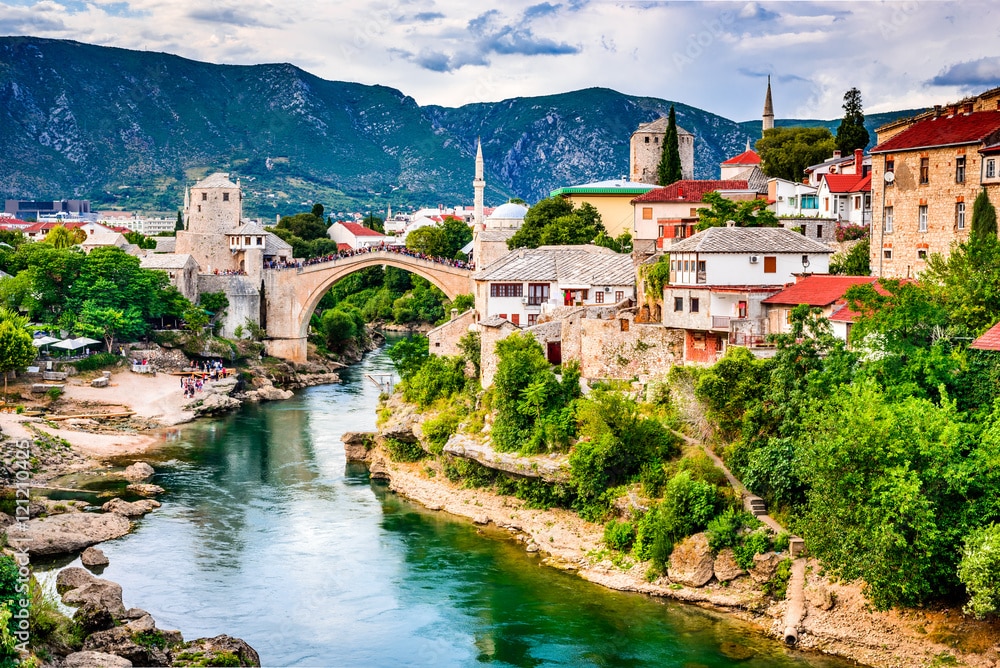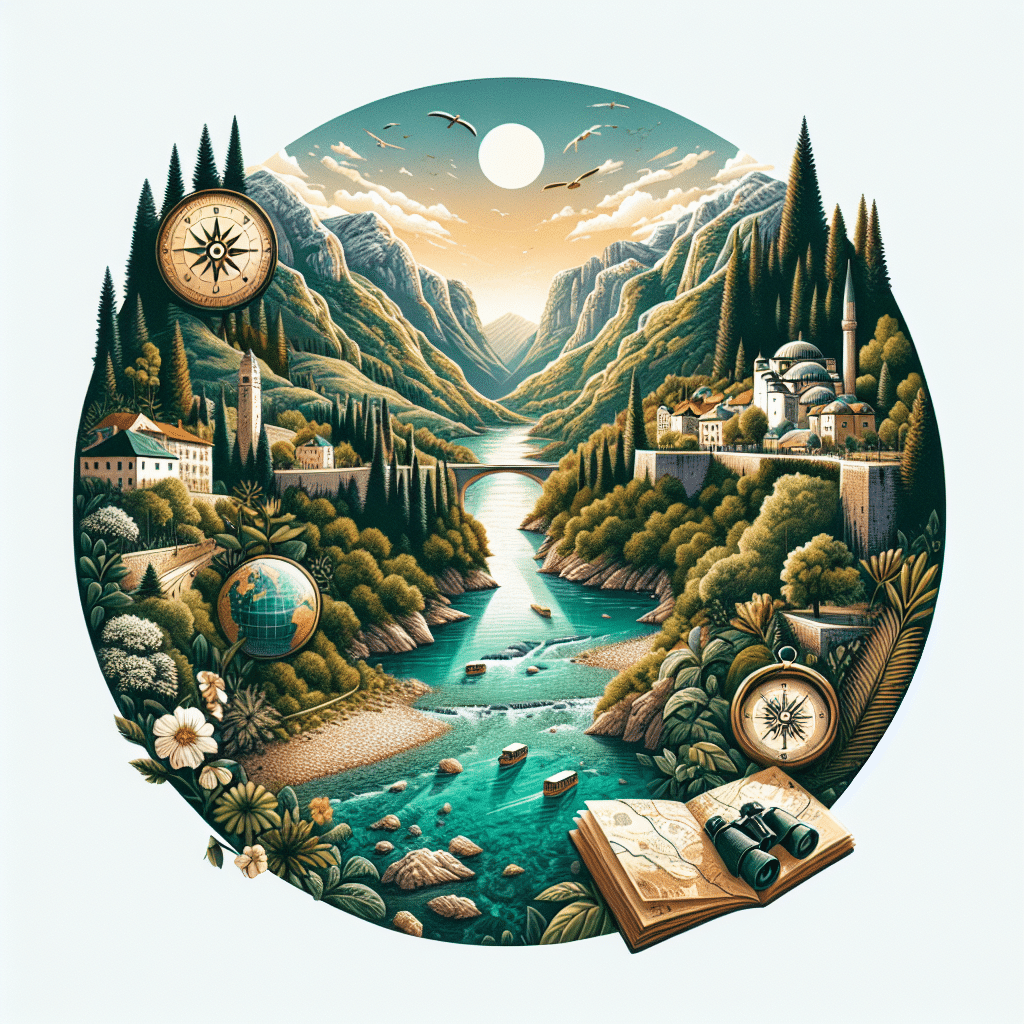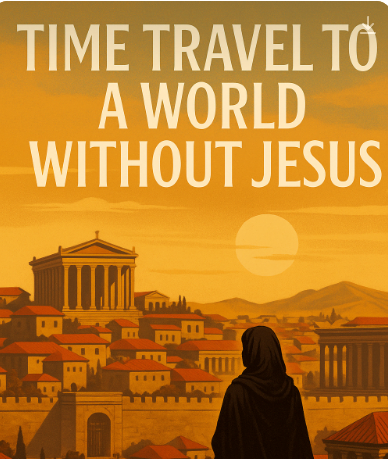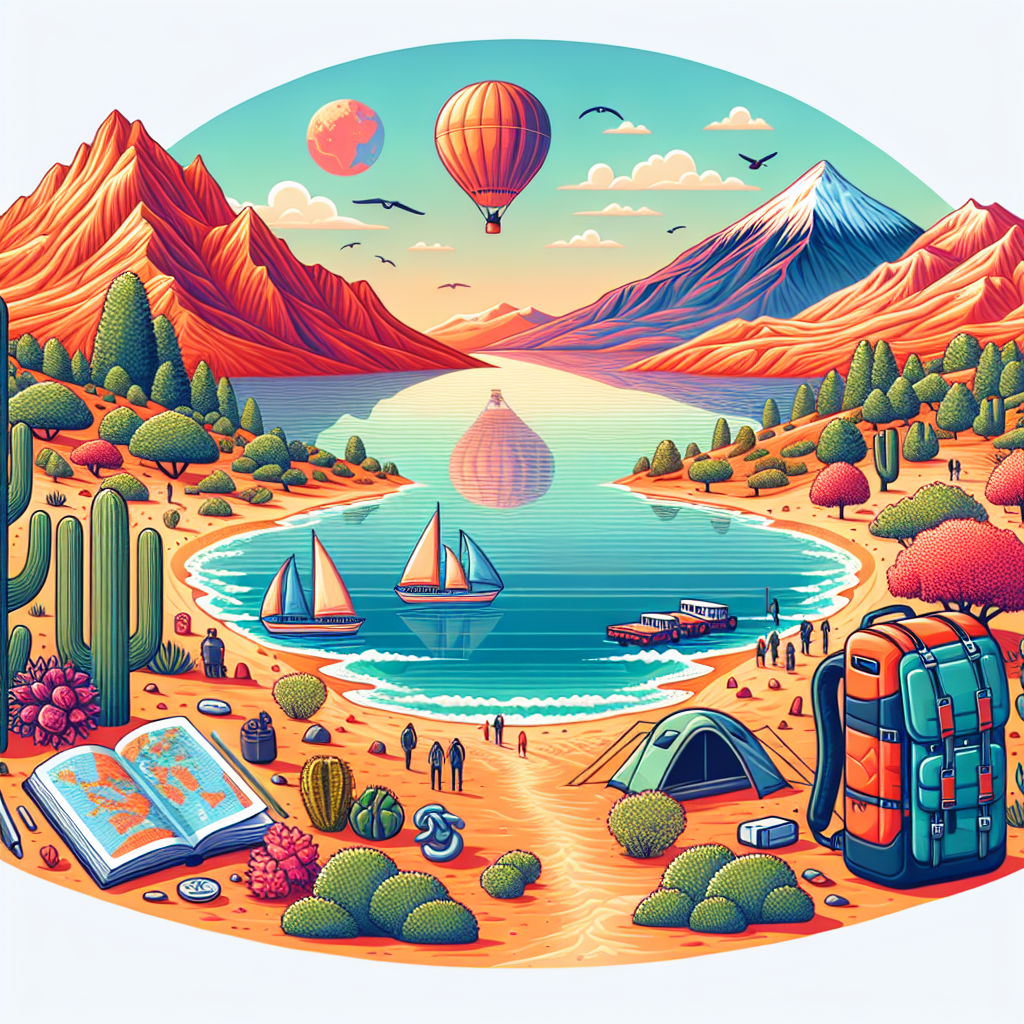
Introduction to Bosnia and Herzegovina
Bosnia and Herzegovina, affectionately known as “Bosnia,” is a breathtakingly diverse country nestled in Southeastern Europe. A blend of East and West, Bosnia’s fascinating history and stunning natural beauty make it a destination like no other. The cultural influences from Ottoman, Austro-Hungarian, and Yugoslav eras shape the identity of this country, resulting in an intriguing mix of architecture, traditions, and cuisine.
Whether you’re strolling through the lively streets of Sarajevo or admiring the majestic landscapes of Sutjeska National Park, you’ll quickly realize that Bosnia is a place where past and present coexist harmoniously. The lush green mountains, sparkling rivers, and warm, hospitable people add even more charm to this undiscovered travel gem. So pack your bags and prepare to explore Bosnia, where each corner tells a story and every turn unveils new surprises.
Why Bosnia and Herzegovina Should Be on Your Bucket List
Bosnia and Herzegovina might not always make the top of the usual tourist lists, but that’s part of what makes it so special. It’s a country where you can escape the crowds and dive deep into a rich, multifaceted culture while enjoying an array of natural beauty. Imagine wandering through bustling bazaar streets, surrounded by the aroma of fresh coffee and grilled meats, or hiking up to mountain peaks that offer panoramic views of untamed wilderness. Bosnia has something for everyone: history buffs, nature lovers, foodies, and adventure seekers alike.
Not only does Bosnia have a tumultuous yet fascinating history, but it also boasts an endless list of natural attractions. From the iconic Stari Most bridge in Mostar to the remote villages dotting the hillsides, the country exudes an authentic, old-world charm that’s becoming increasingly rare in today’s travel scene.
Unique Highlights of Bosnia and Herzegovina
- Historic Cities: Sarajevo, the nation’s capital, is a melting pot of cultures and religions. Stroll through the city’s Old Town, and you’ll see mosques, churches, and synagogues standing side by side—a reflection of the city’s storied past.
- Natural Wonders: The country’s landscapes are jaw-dropping, from the rolling hills of central Bosnia to the dramatic cliffs of the Herzegovina region. National parks like Sutjeska and Una are havens for outdoor enthusiasts.
- Cultural Blend: Bosnia’s blend of Eastern and Western influences is evident in its architecture, music, and cuisine. Ottoman-style mosques and Austro-Hungarian buildings exist harmoniously within the same city.
- Adventure Opportunities: Bosnia is a paradise for thrill-seekers, with white-water rafting on the Una and Neretva rivers, skiing in Jahorina, and world-class hiking on the Via Dinarica trail.
Section 1: Preparing for Your Trip
Passport and Visa Requirements
Traveling to Bosnia and Herzegovina is quite easy for many international travelers. Citizens from the EU, the US, Canada, Australia, and New Zealand can enter Bosnia for up to 90 days without a visa. If you’re from another country, it’s best to check with your local Bosnian embassy or consulate for detailed visa requirements. Always ensure your passport is valid for at least six months beyond your intended stay.
Packing Tips
Bosnia has a continental climate, which means you’ll experience distinct seasons. Summers can be quite hot, especially in the southern Herzegovina region, while winters in the mountains can be harsh and cold.
- Summer: Lightweight clothing is essential, but don’t forget a jacket for the cooler mountain regions. A good pair of hiking boots is necessary for those exploring the national parks, while breathable, casual clothes will suit city strolling.
- Winter: Bring warm layers, including a heavy coat, gloves, and a hat. Bosnia’s ski resorts, such as Jahorina and Bjelašnica, are popular during the winter, so pack your ski gear if you plan to hit the slopes.
- Year-Round Essentials: Don’t forget a rain jacket, especially in the spring and fall when showers can be frequent. Also, pack sunscreen and sunglasses for the sunny days and a universal power adapter for your electronics.
Travel Insurance
Travel insurance is always a wise investment, and Bosnia is no exception. Make sure your policy covers medical emergencies, especially if you plan on doing outdoor activities like hiking or rafting. It’s also a good idea to have coverage for trip cancellations, lost luggage, and other unforeseen circumstances.
Section 2: Arrival in Bosnia and Herzegovina
Airport Information
The primary point of entry for international travelers is Sarajevo International Airport (SJJ), which is located just 12 kilometers from the city center. The airport is small but efficient, offering car rental services, currency exchange booths, and a few cozy cafés where you can grab a coffee after your flight.
If you’re arriving from elsewhere in Europe, you might also fly into Mostar International Airport or Banja Luka International Airport. Both serve a handful of routes but offer a quieter arrival experience.
First Impressions
Landing in Bosnia and Herzegovina, your first impressions will likely center on the landscape: the rolling green hills and jagged mountains that surround Sarajevo or the quaint charm of Mostar’s cobblestone streets. As you make your way into the cities, you’ll immediately notice the blend of old-world charm and modern-day vibrancy. Minarets, church spires, and modern high-rises share the skyline, providing a visual representation of Bosnia’s rich cultural tapestry.
The people are warm and welcoming, and even if language barriers arise, you’ll find that most locals are eager to help and share their culture. Bosnia’s tumultuous past has left scars, but you’ll sense a deep pride and resilience among its people.
Section 3: Where to Stay
Hotels and Resorts
Bosnia offers a wide range of accommodations to suit every traveler’s needs. In Sarajevo, Hotel Europe and Swissôtel Sarajevo are popular options for those seeking luxury and comfort, offering spa services, fine dining, and incredible views of the city. In Mostar, Hotel Mepas is a modern, elegant choice that blends convenience with comfort, while Villa Anri offers a more traditional experience just steps away from the iconic Stari Most.
Local Homestays
For a more authentic experience, opt for a homestay. Staying with a local family is not only budget-friendly but also provides a unique opportunity to immerse yourself in Bosnian culture. In smaller towns and rural areas, this is one of the best ways to experience traditional Bosnian life, from sharing home-cooked meals to learning about local customs.
Airbnb is also increasingly popular in cities like Sarajevo and Mostar, offering a wide range of apartments and homes that cater to different budgets.
Section 4: Exploring Bosnia and Herzegovina
City Guides
Sarajevo
Sarajevo is undoubtedly the heart and soul of Bosnia. It’s a place where the East meets the West—literally. Stroll down Baščaršija, the old Ottoman bazaar, where you’ll find traditional handicrafts, bustling cafés, and the intoxicating scent of grilled čevapi. Just a short walk away, you’ll step into the more modern Austro-Hungarian section of the city, where broad boulevards and grand buildings tell the story of Sarajevo’s European influences.
Must-See Spots:
- Baščaršija: The historic market district with winding streets and charming shops.
- Latin Bridge: The site of Archduke Franz Ferdinand’s assassination, sparking World War I.
- Tunnel of Hope: A sobering reminder of Sarajevo’s siege during the Bosnian War, this tunnel was a lifeline for the city’s residents.
Mostar
Mostar is famous for its iconic Stari Most bridge, which spans the Neretva River. The old town, with its Ottoman-era houses and cobbled streets, is a photographer’s dream. While visiting, don’t miss the opportunity to watch the brave divers leap from the bridge into the river below—a local tradition that dates back centuries.
Must-See Spots:
- Stari Most: The symbol of Mostar, this reconstructed bridge is a UNESCO World Heritage site.
- Kravice Waterfalls: Just a short drive from Mostar, these beautiful waterfalls are perfect for a day trip.
Adventure Tours
For thrill-seekers, Bosnia is a playground. Rafting on the Neretva River is one of the most popular activities. Its emerald-green waters provide the perfect backdrop for an adrenaline-pumping ride through canyons and rapids. Another fantastic spot for rafting is the Una River, located in the Una National Park.
Hiking enthusiasts will love the Via Dinarica, a long-distance trail that cuts through the Dinaric Alps, passing through untouched landscapes and offering some of the best views in the Balkans. The Sutjeska National Park, home to the last remaining primeval forest in Europe, also boasts excellent hiking trails.
Hidden Gems
If you want to go off the beaten path, Bosnia is full of hidden gems. Visit Jajce, a small town famous for its stunning waterfall right in the heart of the town, or explore Pocitelj, a charming village with Ottoman architecture and a fortress offering breathtaking views of the Neretva River.
For a truly unique experience, make your way to Lukomir, the highest and most isolated village in Bosnia. It’s like stepping back in time, as this traditional village has remained untouched by modernity.
Section 5: Food and Drink
Local Delicacies
Bosnia’s cuisine is as rich and diverse as its history, with a delightful blend of Turkish, Mediterranean, and Central European influences. One of the country’s signature dishes is čevapi, small grilled sausages typically served with flatbread (somun), onions, and a side of sour cream or ajvar.
If you’re a fan of pastry, don’t miss burek, a flaky pie filled with minced meat, cheese, or spinach. For dessert, try baklava, a sweet, layered pastry filled with chopped nuts and soaked in honey or syrup.
Dining Etiquette
Dining in Bosnia is a social event, and meals are often accompanied by lively conversation. When visiting someone’s home or sitting down at a restaurant, it’s customary to offer a toast before the meal, usually with rakija, a potent fruit brandy. Refusing food or drink can sometimes be seen as impolite, so even if you’re full, it’s good to sample a little of everything.
Section 6: Outdoor Adventures
Hiking and Nature Trails
Bosnia is a paradise for hikers, with trails that cater to all levels of experience. The Sutjeska National Park, home to the country’s highest peak, Maglić Mountain, offers challenging hikes through stunning mountain scenery. For those looking for something less strenuous, the Via Dinarica trail is perfect, offering breathtaking views of the Dinaric Alps and lush valleys.
Water Activities
If you love water sports, you’ll find plenty of opportunities in Bosnia. The Una River is renowned for its crystal-clear waters and is one of the best places for white-water rafting. For something more relaxing, head to the Kravice Waterfalls, where you can swim in the cool waters or take a boat ride under the falls.
Section 7: Art and Culture
Museums and Galleries
Bosnia’s rich history is beautifully captured in its museums. In Sarajevo, the War Childhood Museum provides a poignant glimpse into the lives of children during the Bosnian War. The Sarajevo Historical Museum also offers insights into the city’s past, particularly during the siege of Sarajevo.
In Mostar, the Herzegovina Museum provides a deeper understanding of the region’s cultural and historical significance. For art lovers, the Ars Aevi Museum of Contemporary Art in Sarajevo is a must-visit, showcasing a fantastic collection of modern art from across the Balkans.
Local Art Scene
Sarajevo’s street art scene is vibrant and expressive, reflecting the city’s resilience and creativity. You’ll find colorful murals and graffiti throughout the city, many of which tell stories of hope and rebirth following the war.
Section 8: Nightlife and Entertainment
Live Music and Performances
Bosnia has a rich tradition of live music, ranging from folk music to contemporary performances. In Sarajevo, catch a performance at the Sarajevo Philharmonic Orchestra, or listen to the soulful sounds of sevdalinka, a traditional Bosnian folk music genre that often tells tales of love and longing.
Nightclubs and Bars
If you’re looking to experience the local nightlife, Sarajevo’s Baščaršija district is home to a variety of lively bars and clubs. For a more laid-back experience, head to one of the riverside bars in Mostar, where you can enjoy a drink with stunning views of the Neretva River.
Section 9: Shopping and Souvenirs
Local Markets
One of the best ways to experience Bosnia’s culture is by visiting its local markets. Baščaršija in Sarajevo is the city’s historic market district, where you can find traditional handicrafts, including copperware, jewelry, and handwoven carpets. In Mostar, Kujundžiluk market is famous for its handmade souvenirs, from intricate ceramics to beautiful textiles.
Shopping Malls and Boutiques
For a more modern shopping experience, visit Sarajevo City Center or Mepas Mall in Mostar. Both offer a mix of international brands and local boutiques, where you can find unique Bosnian clothing and accessories.
Section 10: Travel Tips and Safety
Local Transportation
Bosnia’s public transportation system includes buses and trains, making it relatively easy to travel between major cities. However, if you want more flexibility, renting a car is a great option, especially for exploring the countryside and remote areas.
Taxis are also readily available in most cities, but be sure to agree on a price beforehand or ensure the driver uses a meter.
Health and Safety
Bosnia and Herzegovina is generally safe for travelers, but as with any destination, it’s important to stay aware of your surroundings. Pickpocketing can occasionally occur in crowded areas, so keep your belongings secure.
If you’re planning to hike in rural areas, be mindful of the risk of landmines, particularly in remote regions. Stick to marked trails and seek local advice if you’re unsure.
Section 11: Responsible Travel
Sustainable Practices
When exploring Bosnia’s natural beauty, it’s important to follow responsible travel practices. Stick to designated trails, avoid littering, and respect local wildlife. Water conservation is also important, particularly in rural areas.
Supporting Local Communities
One of the best ways to give back to Bosnia and Herzegovina is by supporting local businesses. Shop at local markets, dine at family-owned restaurants, and stay in locally-run guesthouses. Not only will you be helping the local economy, but you’ll also get a more authentic travel experience.
Conclusion
Bosnia and Herzegovina is a land of contrasts—where East meets West, where ancient traditions thrive alongside modern developments, and where nature’s beauty is rivaled only by the warmth of its people. Whether you’re exploring Sarajevo’s vibrant streets, hiking through the wilds of Sutjeska National Park, or sipping coffee in a quaint village, Bosnia promises to leave a lasting impression.
So, what are you waiting for? Start planning your adventure to Bosnia and Herzegovina today!
Appendix
Useful Phrases
- Dobar dan (Good day)
- Hvala (Thank you)
- Molim (Please)
- Koliko košta? (How much does it cost?)
Emergency Contacts
- Police: 122
- Ambulance: 124
- Fire Department: 123
#BosniaTravel #HiddenGems #ExploringBosnia #Sarajevo #Mostar








